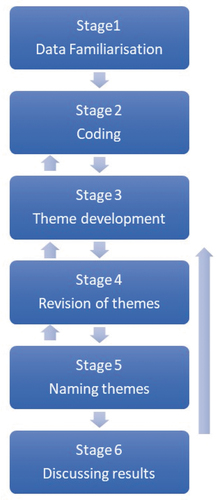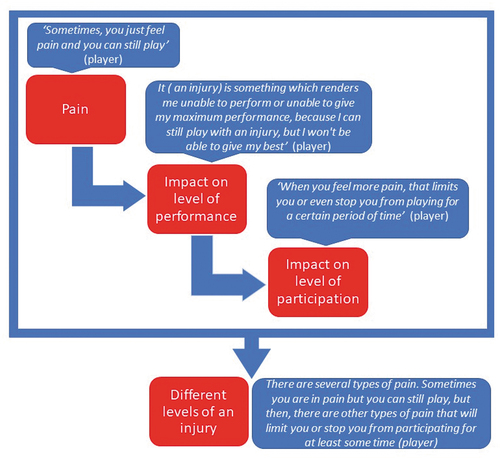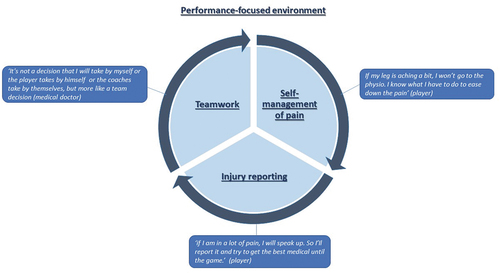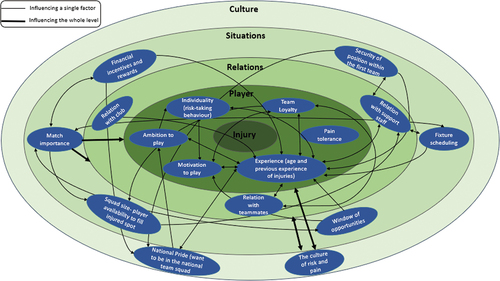Figures & data
Table 1. Interview guide.
Table 2. Demographic data of the participants.
Figure 1. The process of thematic analysis involving six interactive phases (adapted from Braun & Clarke, 2006).

Figure 2. Main thematic map illustrating the relationships between themes and their associated sub-themes. Participants highlighted their definition of a football injury, mainly in terms of consequences on pain, performance and participation (theme 1). Their perception of an injury influenced how they approached injury management. When in pain, players self-managed their symptoms before reporting them. injury reporting was based on the perceived pain severity, with injury management becoming a shared responsibility between different members of the team (theme 2). Yet, various interacting modulators, namely, player, relational, situational, and cultural related factors, modulate injury perception and, consequently, the way players manage and report their injury (theme 3).

Table 3. The theme of injury preception, presented with its subthemes, basic themes and supportive quotes
Figure 3. Injury definition diagram, supported by quotes from participants. This figure describes an injury as a process, with performance limitation described as the main indicator of a football-related injury, while pain and impact on the level of participation are described as subcomponents of an injury within this process.

Table 4. The theme of injury management, presented with its subthemes, basic themes and supportive quotes
Figure 4. The injury management process, supported by quotes from participants. This figure represents the process of dealing with an injury, with players self-managing their pain before reporting it. In reporting an injury, based on its severity, the interaction between all stakeholders is essential in managing the injury.

Table 5. The theme of modulating factors of injury perceptions and injury management, presented with its subthemes, basic themes and supportive quotes
Figure 5. The multi-level map reflects the personal and socio-ecological levels to describe individual factors and their interrelation. The dynamicity and fluidity of interactions between these factors during different times and situations influence how a player perceives and manages an injury. Starting at the centre of the map (injury) and moving distally, the perception of an injury is modulated by 1) individual (player) factors including demographic and psychological related factors; 2) player’s relations with club, support staff and teammates; 3) situational factors across the football season, and the 4) broad football-related cultural messages.

